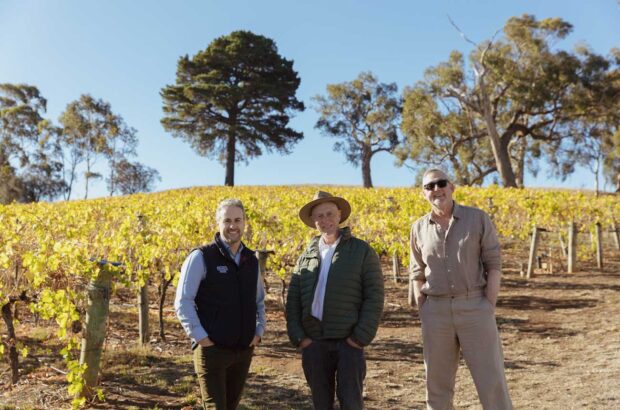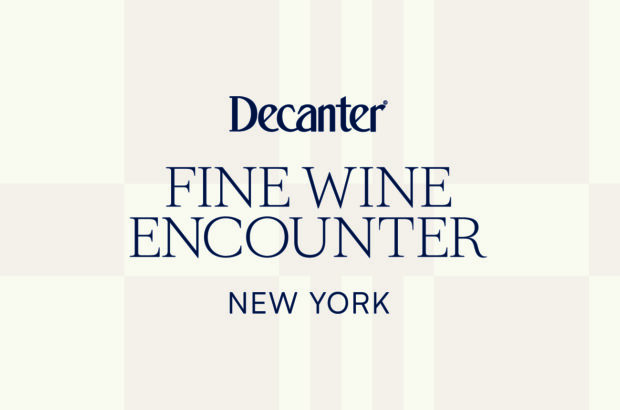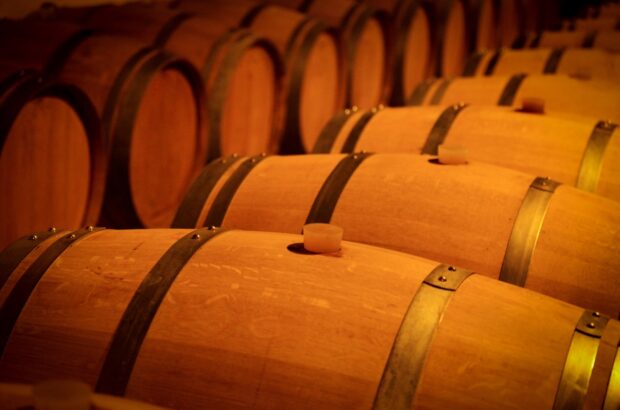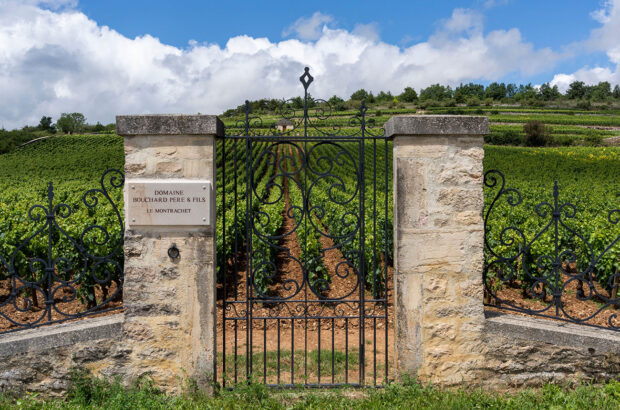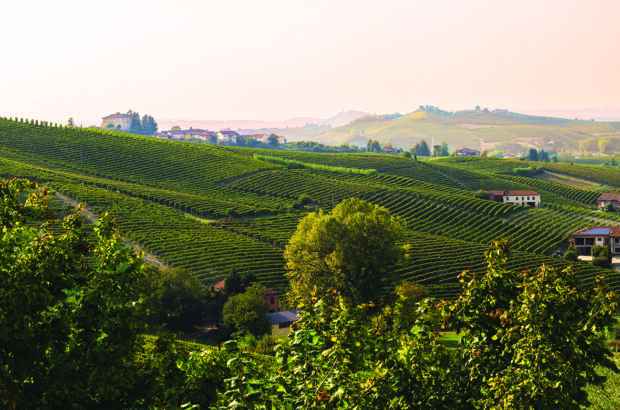When I first visited Bordeaux, the sleepy landscape of turreted stone châteaux and vineyards seemed timeless, with traditions so well established you felt they would go on forever. But new energy in this famous wine region is visible and audible: bees buzz and sheep graze in organic vineyards; brand-new cellars brim with sustainable features and wine fermenting in trendy amphorae; unusual grapes are gaining attention; and the number of women in key roles keeps growing. Yoga among the vines is surely coming.
Change is Bordeaux’s new constant, and innovative winemakers and château owners across every appellation are helping to upend the status quo.
Who are they? They’re the younger generation, which has travelled widely and sees the challenges of climate change. They’re newcomers from elsewhere, bringing new ideas to estates they have purchased. Crus classés are rethinking sustainability and issuing manifestos, like the 2021 manifesto from Château Cheval Blanc on ‘promoting (anti)conventional viticulture’ – a call for a return to the principles of agroecology. Many other estates, some tiny, are making their names through unusual cuvées and eco-conscious experiments.
Here are my picks for eight top innovators in the region, who are all making a difference right now.
Claire Villars Lurton
The power of trees

Claire Villars Lurton. Credit: Sam Sargeant & Luke Carver
Heading up her family’s châteaux wasn’t Claire Villars Lurton’s original plan. But when her parents died in an accident in 1992, she left her studies as a physics doctoral student in Paris to take on her winemaker mother’s role. She became an oenologist, aiming from the start to ‘come back to virtuous and ecologic viticulture’.
That path took her from growing cover crops to organic and biodynamic certification at the estates she now owns – fifth growth Château Haut-Bages Libéral in Pauillac and Châteaux Ferrière (third growth) and La Gurgue in Margaux. Along the way, she married Gonzague Lurton, owner of second growth Château Durfort-Vivens (and Jacques Lurton’s cousin). Together they bought Château Domeyne in St-Estèphe and founded an estate in Sonoma.
Today she is one of Bordeaux’s most exciting winemakers, leading the way in agroforestry and agroecology as another way to create healthier vines for the future. ‘Last year I started planting 120 trees in the middle of vine blocks,’ she says. The mix includes fruit and nut trees and others like the Siberian elm. Trees help soil retain water in hot, dry years and encourage a mycorrhizal fungus network that increases trace and mineral elements in the soil.
She also launched the first no-added sulphur wine from a cru classé (Haut-Bages Libéral) with the 2020 vintage of Ceres (on sale in France at about €20-€24), sourced from an 8ha Merlot plot in Haut-Médoc, where she is interplanting trees and working towards biodynamic certification.
Villars Lurton sees all her sustainable efforts as a long process. She likes to say that it’s a journey, not a project.
Saskia de Rothschild
Revolutionary packaging design

Saskia de Rothschild. Credit: Sam Sargeant & Luke Carver
When then 31-year-old Saskia de Rothschild took over Domaines Barons de Rothschild (Lafite) in 2018, she made Bordeaux history as the youngest person to lead a first growth. Then, last year, she also became the first female CEO of DBR in its 150-year history. She’s accomplished much at the company’s five Bordeaux châteaux, including the
2021 publication of Château Lafite: The Almanac (£125 Flammarion). Modelled on a farmer’s almanac, it’s like a family photo album – a huge departure from the boring format and dull prose of traditional château books.
One splashy innovation is from Château Rieussec in Sauternes: a new bottle design, which debuted with the great 2019 vintage. Sweet wines are seriously out of fashion, and de Rothschild says the objective of the bottle was ‘to get consumers to completely change their perception’. The packaging (pictured here) moves away from ‘the codes of wine bottles’. It’s designed by Swiss company Big Game, using opaque 95% recycled Wild Glass by Spanish glassmaker Estal, with a bright yellow colour-block crown logo on the front and a replaceable cork to remind wine lovers that Rieussec can be kept in the fridge for
a month once opened.
De Rothschild says she hasn’t moved fast, reminding me that the conversion to organic farming at all their French estates started a decade ago with trials. Château L’Evangile in Pomerol is already certified organic, and the others are in conversion. Lafite has an agro- forestry programme underway.
‘The decisions we take today are shaping the way we’ll make wine in 50 years, so it is our responsibility to take our time,’ she says.
Jacques Lurton
Ideas from the New World

Jacques Lurton. Credit: Deepix
Winemaker Jacques Lurton is a man constantly in motion. From an illustrious Bordeaux clan, he spent years consulting around the world and created his Islander Estate on Kangaroo Island in Australia.
When he took over as president of Vignobles André Lurton in 2019 after the death of his esteemed father André Lurton, he tapped that New World experience for a new line of affordable single-varietal wines, including a Muscadelle, under the Diane label, named after a statue of Roman goddess Diana in the garden at Château Bonnet. He even plans a single-varietal Cabernet Franc at Château de Rochemorin in Pessac-Léognan.
‘I found a company that was static,’ Lurton says. ‘I thought it was necessary to give an input to make it shine again. I love finding new angles that no one has explored.’
His mind has been humming. With numerous châteaux and more than 600ha of vines, there’s plenty of scope. In rethinking cru classé de Graves Château Couhins-Lurton, he introduced a new white and red, Acte ll, ageing them in unusual horizontal sandstone amphorae to obtain pure expression of the fruit. At Château Bonnet (Entre-deux-Mers) he’s using lighter bottles and recycled paper and ink for labels.
Lurton – announced in April this year as the new president of the Syndicat Viticole de Pessac-Léognan, following in the footsteps of his father who held the same position for 18 years – is working on a way to protect against frost without any pollution. He has also just finished a cuvée called Eden, produced under ‘bio-control’ conditions using natural products for plant stimulation in a process that’s ‘similar to homeopathy’. And that’s just the beginning.
Guillaume Pouthier & Château Les Carmes Haut-Brion
New winemaking techniques

Guillaume Pouthier. Credit: Sam Sargeant & Luke Carver
Real estate entrepreneur Patrice Pichet bought pretty Château Les Carmes Haut-Brion in 2010, and set the estate, situated inside the Bordeaux city limits, on a quietly revolutionary path. The château is surrounded by a lovely park with a lake and vines, but the most visible part of its new life is the sleek, boat-shaped cellar that looks like it’s floating in an ornamental pond, accessed by footbridges. Designed by Philippe Starck, it’s supposed to symbolise Bordeaux’s maritime history.
But I only understood what’s behind the serious improvement in the wines by talking to intense, charismatic technical director Guillaume Pouthier, whom Pichet hired from Rhône powerhouse Chapoutier.
In 2012, Pouthier introduced the idea of putting whole bunches of grapes, stems and all, in the fermentation vats: something we associate with Burgundy. He says it works because the vineyard is mainly Cabernet Franc on clay and limestone.
Pouthier aims for wines with bright aromas and a wider span of drinkability, which led him to another innovation: using infusion rather than extraction with pumpovers during fermentation. This gentle, hands-off method, he says, creates softer tannins, while ageing wines 10% in clay amphorae, begun in 2015, helps give the wines energy.
Fresh and complex, with a wonderful silky texture, the wines speak for the success of the techniques. What’s next? ‘I am still maturing, ageing my ideas like wine,’ says Pouthier.
Joséphine Duffau-Lagarrosse
Rethinking her heritage

Joséphine Duffau-Lagarrosse. Credit: Sam Sargeant & Luke Carver
It’s an oh-so familiar Bordeaux tale. Shareholders of a family estate want to cash in. A member of the young generation wants to keep it but can’t afford to buy them out.
In 2021, the story of St-Emilion’s Château Beauséjour (Héritiers Duffau-Lagarrosse), a premier grand cru classé that makes stunning lush wines, had a happier ending. That’s because two 30-year-old women believed in their own abilities and shared a vision. A generation ago, they probably couldn’t have pulled it off.
Ambitious ninth-generation Joséphine Duffau-Lagarrosse pitched the investment to Prisca Courtin-Clarins, whose family owns Clarins cosmetics, and who manages her family’s investments. The duo put together a deal, the Courtin family’s first wine world foray. Despite an earlier sale agreement, French agricultural land agency SAFER awarded the estate to the pair (part of their mandate is to help young farmers) to keep the connection with the historic family and thanks in part to their sustainability and biodiversity vision.
Winemaker Joséphine, who has worked in Napa, New Zealand, Mexico and Bordeaux, quickly took charge, re-blending the existing 2020 assemblage to show more freshness, and included 19% Cabernet Franc because of its quality. The 2021 vintage was difficult, but she is happy with the balance and vibrancy that she says is ‘my style’ and hired a new consultant team, including Dr Axel Marchal (recipient of the Decanter Rising Star award in 2021).
The future? She says: ‘I want Beauséjour to be compared to the great wines of the world.’
Yannick Reyrel
Remaking Petit Verdot & Fronsac

Yannick Reyrel. Credit: Sam Sargeant & Luke Carver
When he was director at Haut-Médoc Château Belle-Vue south of Margaux, Yannick Reyrel updated the image of Petit Verdot – a late- ripening grape variety traditionally used in small quantities in some Bordeaux blends, generally to enhance colour and tannic depth or floral character. From 80-year-old vines, Reyrel created a sleek and spicy 100% Petit Verdot wine, ageing partly in terracotta amphora. This spotlight on the grape’s solo potential has inspired others to take the grape more seriously.
Now, Reyrel, once assistant to Jean-Claude Berrouet at Petrus in Pomerol, has taken innovative ideas to the underrated Fronsac appellation on the Right Bank, upgrading Château de Carles and its prestige wine Haut- Carles. He points out that the region has the same soils as the much more famous St-Emilion plateau and that climate change has benefited its terroir.
Reyrel brought the way of working at grands crus classés to the property and the region, replanting with a massal selection (replanting vineyards using cuttings from the best-quality old vines on an estate) from an old plot of Cabernet Franc on St-Emilion’s plateau, introducing a densimetric grape-sorting table (separating by density or relative gravity) – the first in Fronsac, he says – and installing new tanks shaped like upside-down pyramids to create softer, more velvety wines. Will all this help to update Fronsac’s image? He hopes so.
Thomas Duclos of Oenoteam
Consultant for a new style

Thomas Duclos. Credit: Sam Sargeant & Luke Carver
Bordeaux’s oenology consultants help shape a château’s wine style more than most people realise. Bearded Thomas Duclos of Oenoteam is the new rising star, especially on the Right Bank. In the past few years, he’s signed on with top properties, such as Château Troplong Mondot, that were previously advised by Michel Rolland. Taste the recent wines and you see a dramatic shift to the fresher, more subtle style taking hold in St-Emilion.
Duclos is at the forefront of the departure from the turbo-charged, oaky, high-octane style favoured by the iconoclastic garagiste movement that emerged in the appellation in the 1990s. ‘The word “fresher” is far too simplistic,’ Duclos says. His vision has always been about balance, elegance, precision, purity, nuance. He credits a new generation at properties, as well as a new group of critics, for now championing this style.
In 2005, he started work in the lab in Libourne that was revamped as Oenoteam, which he co-founded, in 2011. ‘Making great wines means bringing a place and all its nuances into the bottle,’ he says. Expect his vision to spread to many more estates in coming years.
Tristan Le Lous & Château Cantenac Brown
Earth-driven sustainability

Tristan Le Lous. Credit: Cristina Dogliani
The Médoc is home to many glamorous cellars, but you won’t be able to see Château Cantenac Brown’s unique homage-to-the-earth chai until 2023, when Burgundian businessman Tristan Le Lous, whose family bought this third growth Margaux estate in 2019, is to unveil a zero-carbon footprint version that’s constructed from the land.
Le Lous hired pioneering architect Philippe Madec to create a 5,000m2 cellar that would completely integrate the building with the environment. The result is a rammed raw-earth construction that uses compressed blocks of clay and sand mixed at the château to form thick earth walls with a wooden framework. It will maintain the perfect temperature and humidity for ageing wine without resorting to air conditioning.
In another nod to the earth, in May, Cantenac Brown issued a ‘non-fungible token’, titled The Power of the Earth. Finland-based artist David Popa created a biodegradable ‘fresco’ on the plateau in front of the estate, from a mixture of earth and natural pigments, to be washed away by the first rain. The NFT is a video of its creation that was auctioned off to raise funds for the Conservatoire du Littoral, a French conservation organisation, saving virgin land from urbanisation. Le Lous dreams of more. ‘I would love to be able to run all the winery equipment on electricity and completely eliminate the use of oil,’ he says.





